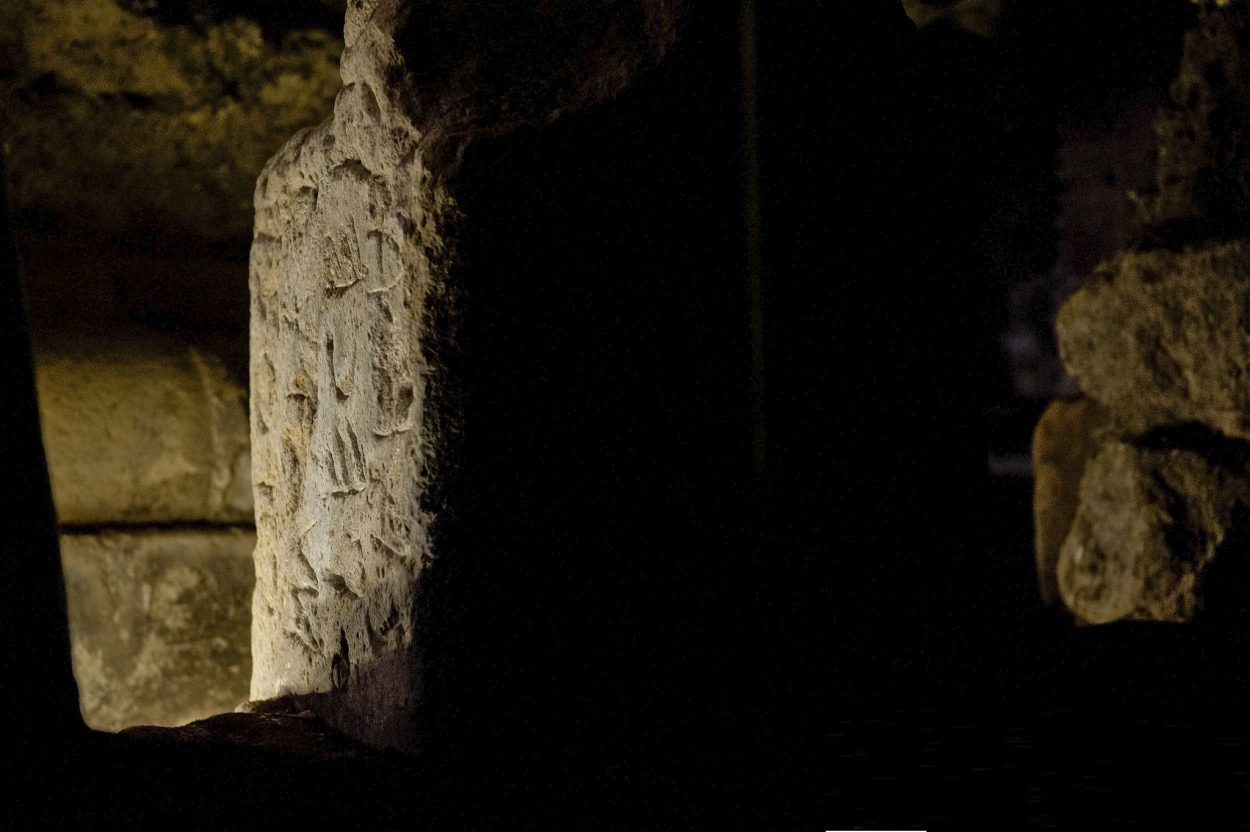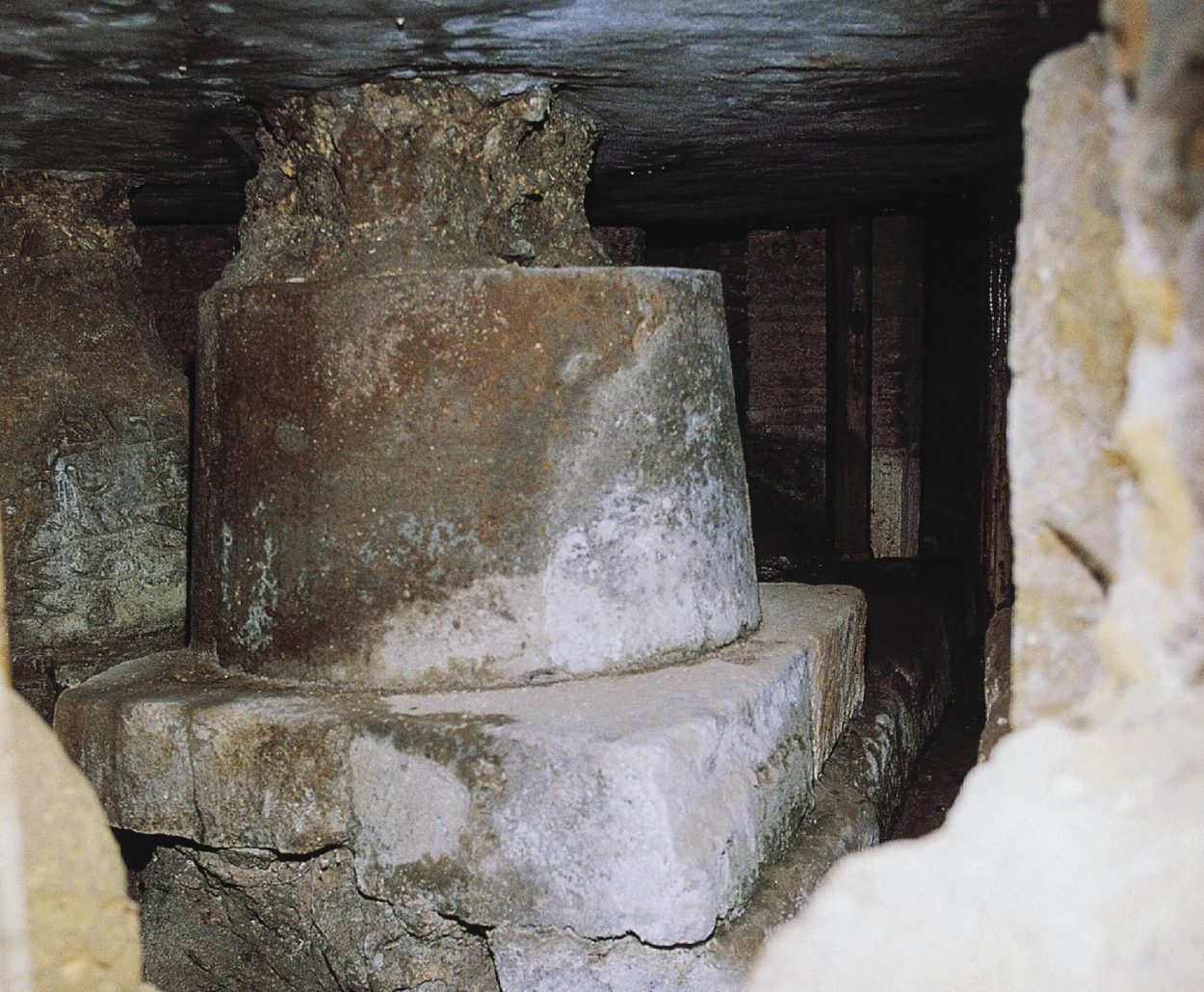The Lapis Niger is an ancient sanctuary and a remnant of the Comitium in Rome, that some Romans believed was the venerated sacred tomb of the city’s legendary founder, Romulus.
The Lapis Niger, meaning “Black Stone” in Latin was first brought to light in a series of excavations by Giacomo Boni in 1899-1900, located between the Curia Julia and the Arch of Septimius Severus in the Forum of Rome.
Boni’s excavations revealed a fourteen-square metre black pavement, for which underneath in a subterranean chamber was an earlier phase dating from between the 6th century BC to the 2nd century BC, containing substantial votive deposits in gravel; such as dedicatory gifts, small idols, pieces of terracotta bas-reliefs, fragments of vases and bones of animal sacrifices, and a collection of worked stone.
At the time, the sanctuary consisted of an open-air horseshoe shaped alter from 350-300 BC, a column that was probably dedicated for cult worship, and an inscribed stela with boustrophedonic text that remains the earliest example of an Old Latin inscription dating from 570–550 BC.
The meaning of the inscription is difficult to discern, but several scholars have suggested that it refers to an ancient piece of ritual law. What is certain, is that the text mentions “rex”, which could refer to the kings of Rome during the Roman regal period, or the “rex sacrorum” during Republican times.

To the Imperial Romans, the sanctuary was viewed as a place of great significance, but was obscured in ancient mythology and several conflicting stories as to its origins.
Writers of the early Imperial period such as Dionysius of Halicarnassus, Plutarch, Varro and Pompeius Festus, wrote of the sanctuary in an uncertain and ambiguous way, with one such text by Festus stating: “The black stone in the Comitium marks an unlucky spot: according to some it was intended to serve as the grave of Romulus, but this intention was not carried out, and in the place of Romulus his foster-father Faustulus was buried; according to others it was the grave of Hostus Hostilius, the father of the third king Tullus Hostilius”.
The Lapis Niger along with the Vulcanal are the only known parts of the ancient Comitium to survive due to periods of reorganisation of the Forum and the Comitium space. The Comitium was a public centre for much of the political and judicial activity of early Rome, and during the Roman Republic was where the Tribal Assembly and Plebeian Assembly met.
It has been suggested that the Lapis Niger was merely a repository for objects that reminded the Romans of their monarchic past (evidenced by the votive deposits), which were buried as a unified ‘place of memory’ that acquired a very special status in the late Republic, a place connected with death, mournful and fatal (marked determinedly by the later black pavement above) until its true purpose was obscured and forgotten by the Roman people into the Imperial period.
Header Image : The Lapis Niger – Copyright De Agostini / A. De Gregorio – Licensed : Agefotostock





